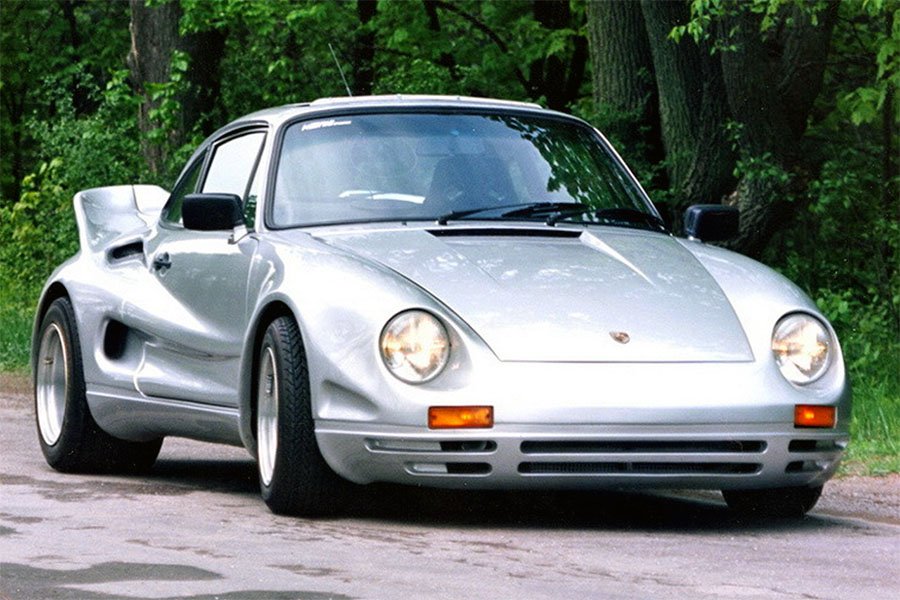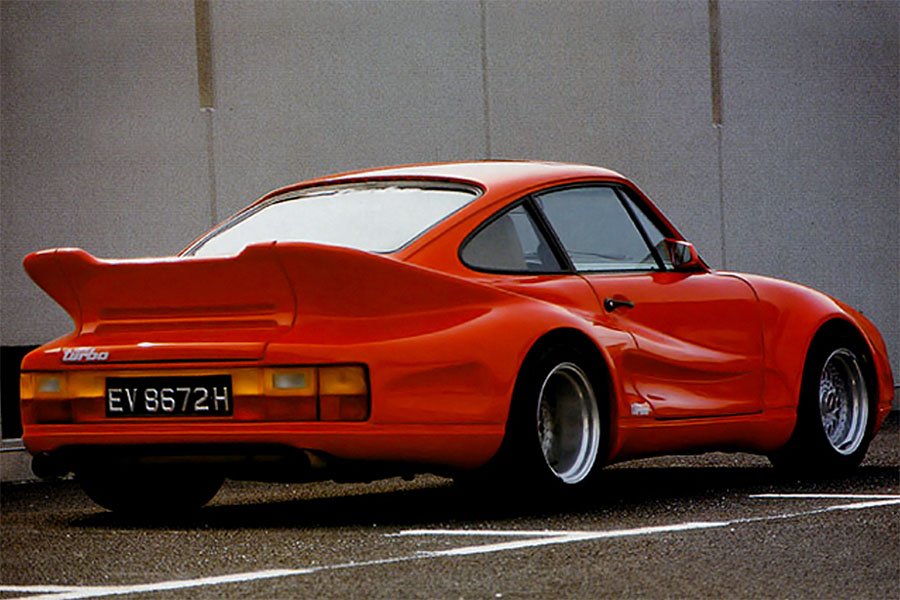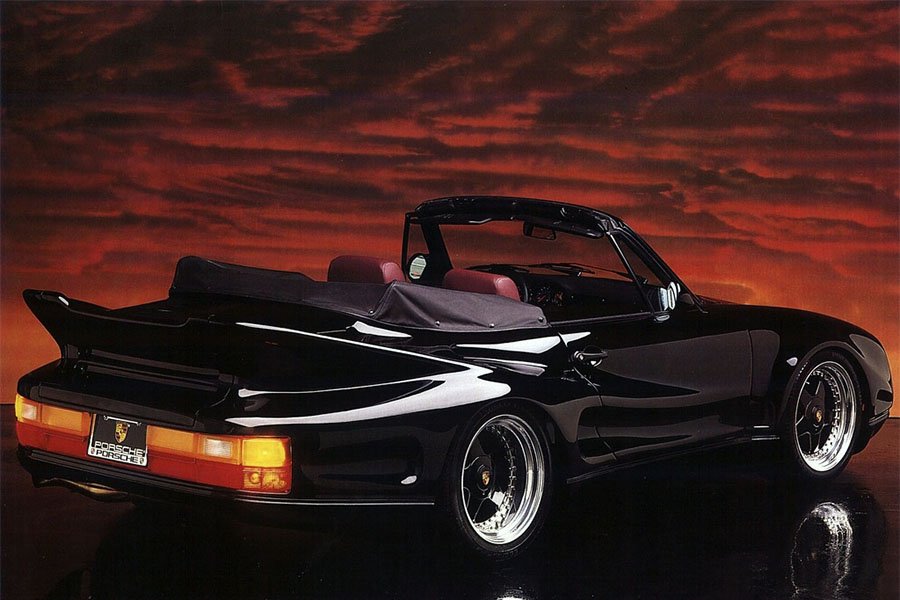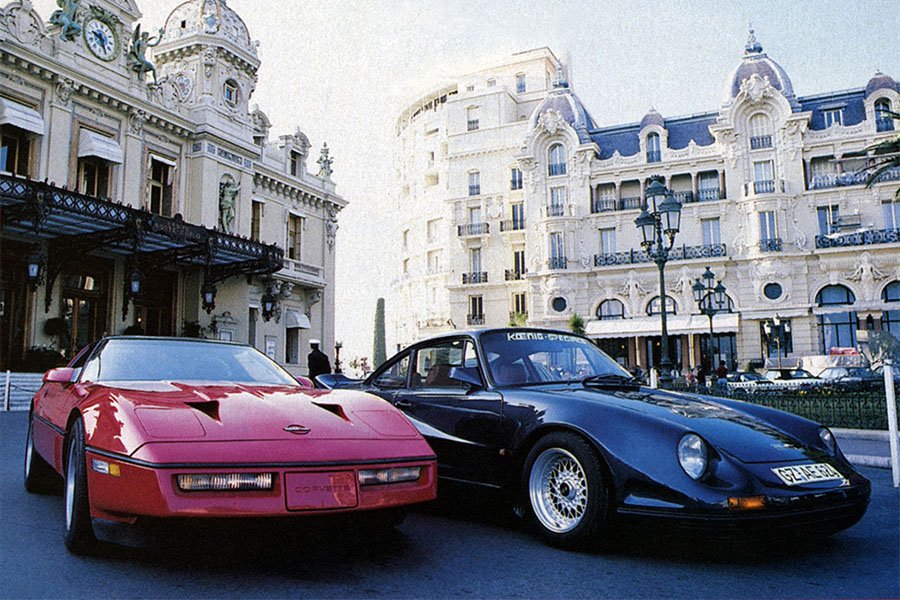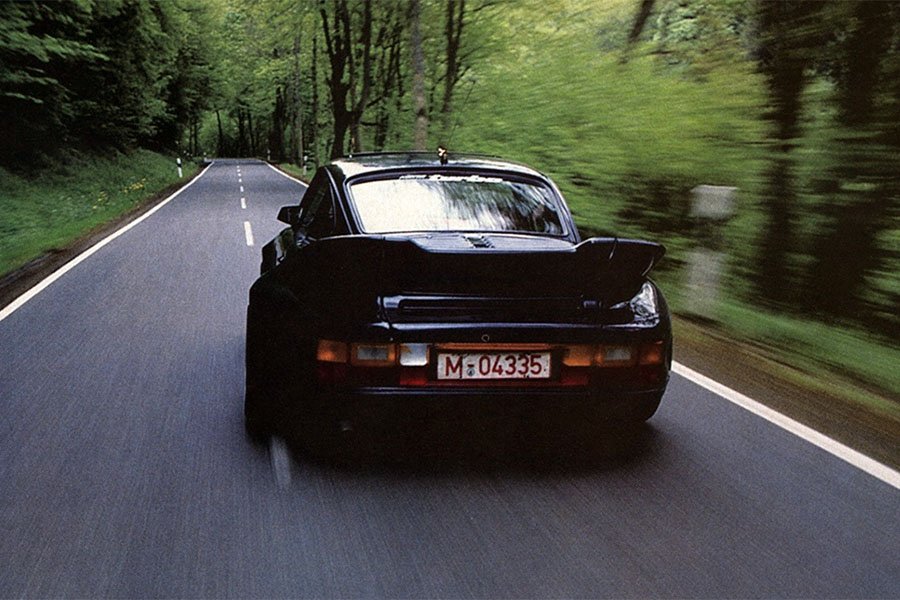Guide: Koenig Specials Porsche 911 Turbo Road Runner
/BACKGROUND
By the mid-to-late 1980s, Willy Koenig’s tuning and customisation company was at the peak of its power.
In a little over ten years, Koenig Specials had gone from a small Munich garage to a plush multi-storey city centre complex complete with showroom, workshop, engineering department and offices.
The company had also massively expanded the range of cars for which it catered; having initially started out with Ferraris, Koenig now did conversions for owners of Mercedes-Benz, Porsche, BMW, Jaguar and Lamborghini. Owing to the absence of traditional coachbuilders which had long since disappeared from the scene, wealthy European, Middle Eastern, Japanese and American buyers queued up for Koenig to build them something truly individual.
In addition to the elaborate body kits for which Koenig was best known, increasingly ambitious engineering projects were being undertaken - some of the firm’s recent offerings looked like brand new vehicles in their own right and featured considerable mechanical enhancement.
Arguably the company’s most famous product from this period was the Ferrari Testarossa-based Koenig Competition of 1988 which offered F40-style looks and performance in both open and closed body configurations. With an engine capable of producing over 1000bhp, a top speed in excess of 210mph and a really handsome look, the Koenig Competition was a frequent cover star for motoring publications around the world.
In a similar vein, but far less well known, was Koenig’s Porsche 911 Turbo-based Road Runner that arrived in July 1987.
Like the F40-inspired Koenig Competition, the Road Runner offered looks and performance to match Porsche’s flagship model of the time: the state-of-the-art 959.
BODYWORK
The Road Runner’s most obvious deviation from a standard 911 Turbo (930) was its radically reworked body.
Conceived during the mid-to-late 1980s when body kits and spoilers were at their most dramatic, the Road Runner emerged as a curious mix of typically elaborate super tuner features with an array of more subtle details.
Significantly, Koenig eschewed the opportunity to fit pop-up headlights in favour of exposed vertically-mounted 928 units set within traditional cowls.
The entire front fender and air-piercing nose assembly was an enormous single-piece moulding fashioned from fibreglass. Six slim intakes were carved out from the front apron above which were a pair of simple rectangular indicators.
Along with the roof, the front lid was one of the few panels to remain in its original guise.
Down each flank was where the Road Runner began to get really wild. All four fenders were dramatically widened; those at the back incorporated massive lower intake scoops that began just behind the front wheel and necessitated the doors be completely reconfigured below handle height. Shoulder-mounted intakes further up fed fresh air to the intercooler.
The upswept side profile culminated with a massive fixed rear spoiler quite unlike anything yet seen. It formed part of a re-styled back end that incorporated full width Audi 200 lights and was almost unrecognisable from the donor car.
Deep body coloured sills were also installed. Having fitted standard flag-type mirrors to a couple of early cars, more aerodynamically contoured items were soon developed.
All the Koenig bodywork additions were fashioned from fibreglass.
Both Coupe and Cabriolet body styles were offered. Customers could supply either a normally aspirated base car for modification or a factory turbo.
INTERIOR / OPTIONS
Koenig left the 911’s original interior architecture well alone, however, customers were able to specify an array of special equipment if desired.
The standard four horizontally-spoked steering wheel was routinely changed for a three-spoke type sourced either from Porsche’s Exclusive department or an outside supplier like Personal.
The standard dash was also retained, but Koenig often added a custom centre console that bridged the gap between the knee roll and transmission tunnel. If specified, this area was normally home to a high end audio system and controls for the air-conditioning system. If an uprated hi-fi was requested, additional speakers could be fitted to the door panels, rear sidewalls and rear bulkhead panel.
Extra dials were often added alongside the ventilation controls (to include a boost gauge) and an onboard touch-pad computer could be integrated to the glovebox door. Koenig also offered a TV, video player and in-car telephone.
Expensive electric Recaro front seats were fitted to most cars.
Interior surfaces and instruments could be requested in practically any colour along with contrasting leather or wooden dash inserts.
ENGINE / TRANSMISSION
Unlike some of their rivals, Koenig did not simply supply cosmetic enhancements - offered alongside was some expensively developed mechanical equipment.
The full fat Road Runner came with an enlarged version of Porsche’s air-cooled all-alloy Flat 6. Displacement was taken out from 3.3 to 3.4-litres and a bigger KKK K27 turbo was fitted. There was also an uprated intercooler, re-mapped engine management and a free-flow exhaust system.
Compared to a standard 911 Turbo of the period (which produced 330bhp), power outputs of between 480bhp and 550bhp were routinely quoted for these Koenig-enhanced engines. However, precise details are very hard to come by. What we do know is that the original two valves per cylinder, single overhead camshafts and dry-sump lubrication were all retained.
If the 3.4-litre big turbo motor was requested, the original 930’s four-speed gearbox was switched out in favour of a five-speed unit.
CHASSIS
As the 911 / 930 platform was well-proven when it came to handling massive amounts of power, no structural changes were made to the steel monocoque or basic suspension layout.
Up front was a MacPherson strut arrangement with lower wishbones, longitudinal torsion bars and anti-dive geometry. At the back were semi-trailing arms with anti-squat.
Koenig fitted uprated Bilstein dampers, thicker anti-roll bars and a front strut brace to add a little extra rigidity.
Brakes were the standard 917-derived cross-drilled and ventilated discs with aluminium hubs and finned four piston alloy calipers. Straight from Porsche the disc diameter was 304mm at the front and 309mm at the rear.
Instead of the 16-inch diameter Fuchs forged alloys fitted to the standard 911 Turbo, Koenig installed smaller 15-inch rims developed in conjunction with BBS. The fronts were widened from 7 to 9-inches while those at the back went from 8 to a massive 13-inches. Split rim five-spoke star-pattern alloys were offered as well.
An OEM 80-litre fuel tank was installed under the front lid.
WEIGHT / PERFORMANCE
Although no official figure was ever published concerning the Road Runner’s weight, it was likely about on par with the regular 911 Turbo at 1300kg.
In 480bhp trim, 0-62mph was said to take 4.4 seconds (down from 5.1) and top speed was a rumoured 190mph (up from 161mph). However, it would require a brave driver to have taken one of these cars up to that kind of figure owing to a well-publicised lack of front-end downforce.
PRODUCTION
Koenig are understood to have supplied around a dozen-or-so Road Runner’s with the fully uprated mechanical specification between 1987 and 1990. A handful of additional cars were built up with just the cosmetic pack.
Most of the production run was split between Germany and Japan.
Text copyright: Supercar Nostalgia
Photo copyright: Koenig - https://www.koenig-specials.com/ & Road & Track - https://www.roadandtrack.com/
